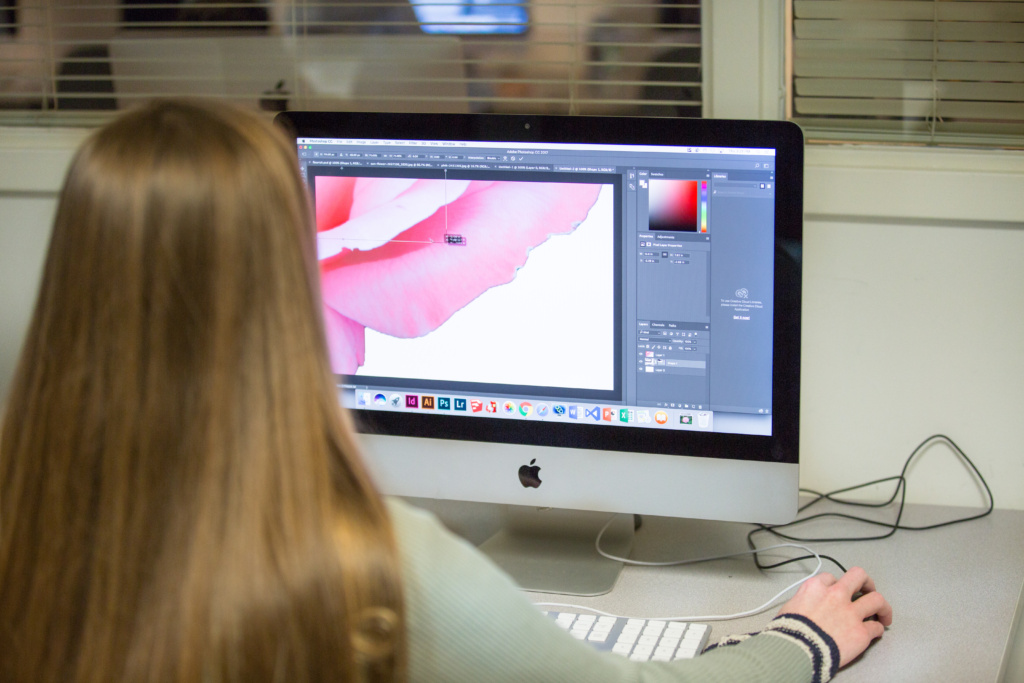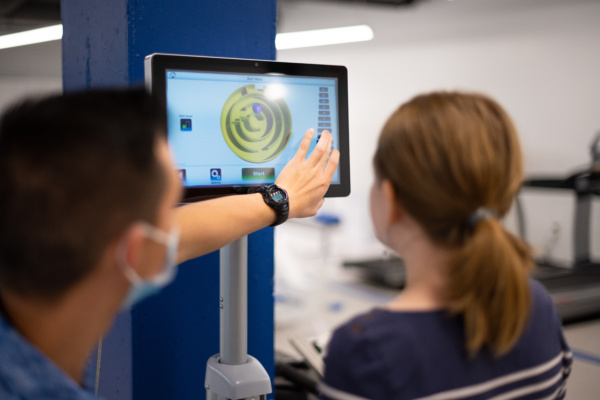If you are interested in solving communication challenges through art, then Bob Jones University’s graphic design program might be a good fit.
“Graphic design is a unique mix of art, marketing and problem solving,” said Jay Bopp, division chair.
As a graphic design major, you will learn principles of art and design and how to communicate through digital visuals. In contrast to an artist, who has their own messages they want to portray, the graphic designer has to understand clients and help them solve that problem “in a visual way that will communicate to an audience,” Bopp said.
What Classes Will I Take?
If you are unsure if graphic design is a good fit, Introduction to Graphic Design covers general aspects and specializations of the graphic design industry, the surface of design and color theory, and the basics of Adobe InDesign and Adobe Illustrator.
If you are interested or want to know more about the graphic design industry, Bopp recommends Becoming a Graphic and Digital Designer by Steven Heller and Veronique Vienne. “It would be good for anybody who’s interested in graphic design as a profession to research what graphic design (is) in today’s world,” Bopp said.
Introduction to Graphic Design dovetails with Foundations of Art and Design, a required course for all art and design students. The course delves into being a Christian in the visual arts. “Those two provide a framework and a grounding in what it means to be a designer and a Christian,” Bopp said.
What Landmark Projects Will I Complete?
As a sophomore, you will complete a midpoint review — a checkpoint halfway through the graphic design program to make sure everyone is progressing on track. “Graphic design is very competitive,” Bopp said. “So when you get out, you have to be prepared to take on a lot of competition.”
You will complete an exhibition of your work as a senior. After your exhibit, you will understand how to design displays, work with vendors to print on unusual objects, and design spatially. The biggest capstone for the graphic design program at BJU is the portfolio. “Anybody in the graphic design field will tell you it matters less where you go to school (and) more what your portfolio looks like,” Bopp said.
What Are Some Things that I Will Learn?
You will learn the principles of art and design. Through design theory, you will learn how to utilize the principles of things like light and dark, value, texture and pattern, as well as elements of art such as line, color and shape. In color theory, you will learn how to use colors effectively and appropriately. Unique to the discipline of graphic design is typography – how to effectively and appropriately use fonts.
“A lot of times, people use fonts that don’t emphasize the message that they’re trying to convey, and (that) can detract from the message they want to convey,” Bopp said.
Using visuals and fonts together is a crucial concept for graphic designers. Almost everything in the world has a picture with text. Figuring out how to balance and synergize word and text is a skill that has to be developed as a graphic designer.
What Experiential Learning Will I Have?
All graphic design students are required to complete an internship. “It has always been kind of the portal through which the designer goes from college to professional practice,” Bopp said. “We’re looking for internships where they can do real work, where they can get really involved, and the company they’re working for wants them there.”
In a number of graphic design courses, students have projects with real clients. The graphic design program frequently connects students with clients and freelance projects outside of class. Graphic design students often participate in the University Marketing Association.
”Graphic design in this day and age is so integrated with marketing, (so) it’s really good for students to understand more about the marketing side of things,” Bopp said.
What Are the Job Prospects?
There is an array of graphic design-related occupations, including art director, brand strategist, user interface designer and web designer. New emerging technologies are constantly providing ways for graphic designers to use their skill sets.
“We want our students to be doing professional quality graphic design by the time they graduate,” Bopp said.








